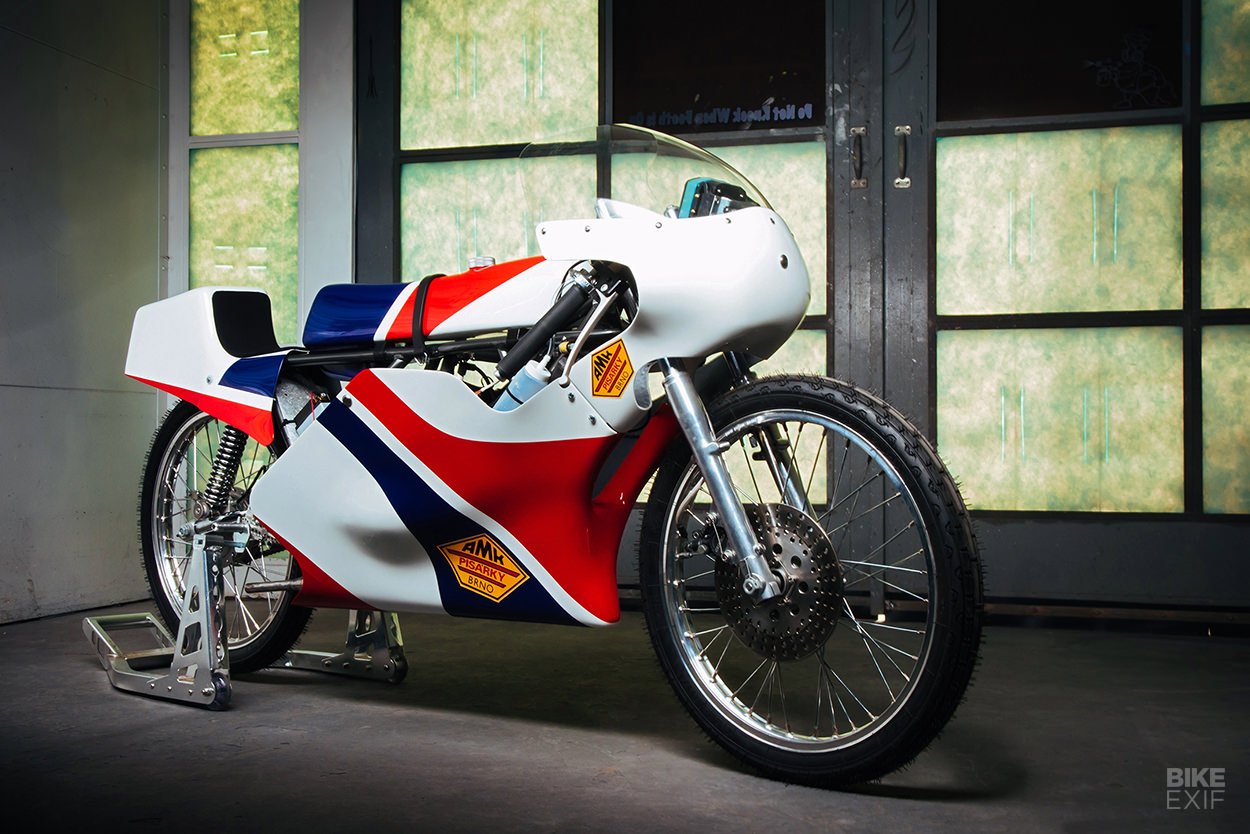
Nothing arouses curiosity quite like a rare racing machine. Bonus points if it’s so vintage and obscure, you need to turn to specialist internet forums to pinpoint its origins. Which is exactly what Cole Mahlowitz, the owner of this beautifully restored 1970s 50 cc Grand Prix racer, had to do.
When Mahlowitz bought the bike, it was listed as a 1975-model ‘Czech’ Minarelli 50 GP—a 50 cc two-stroke racer with a six-speed box, and a claimed output of 16 hp at 14,500 rpm. But when the bike arrived, he had to dig deeper. Because although the motor was undoubtedly a Minarelli unit, it strangely had ‘ČZ’ stamped in several places.
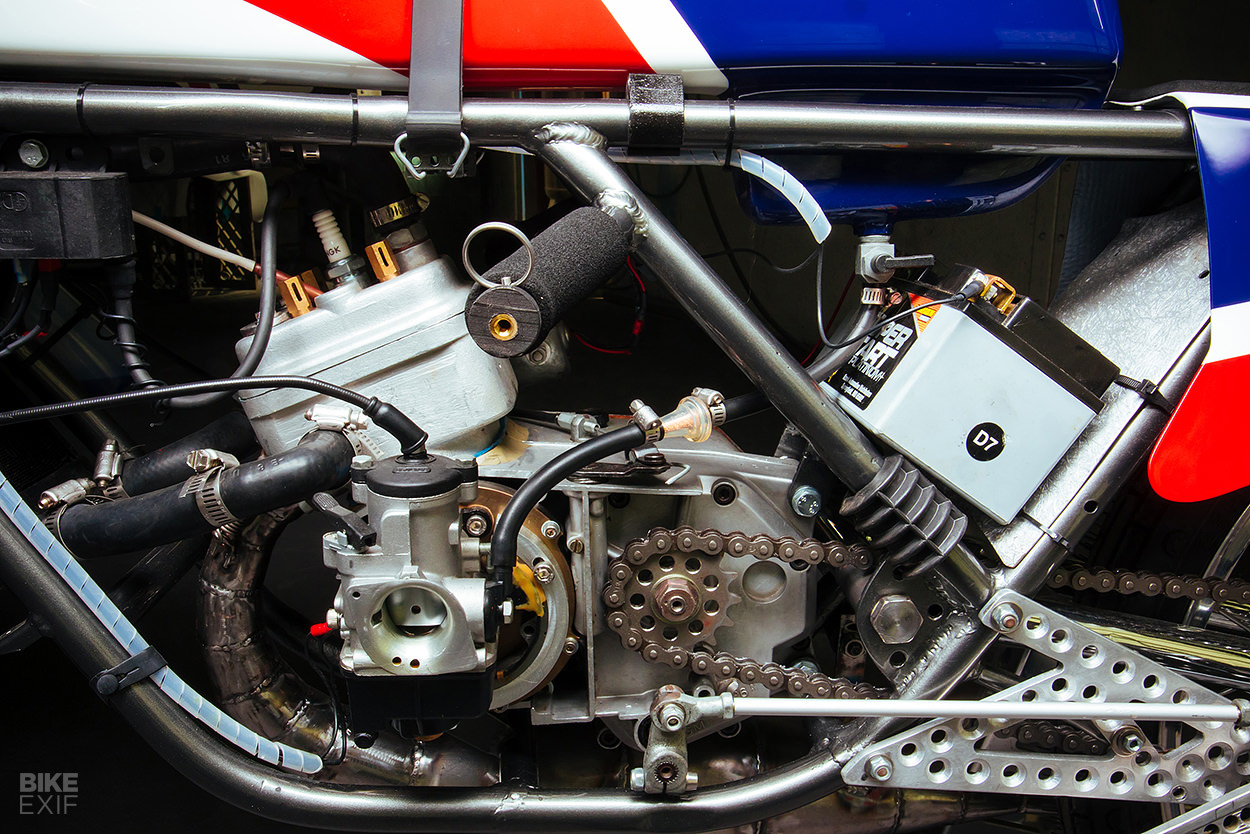
The now-defunct Czech manufacturer ČZ never built a 50 cc GP racer, so Mahlowitz took to the internet to figure it out. Experts on European forums collectively believed the bike to be a pet project from an engineer who was originally part of Jawa’s racing department. And the ‘AMK Pisarky Brno’ stickers suggested that it was likely raced at the Masaryk circuit in Pisarky, a suburb of Brno in the Czech Republic.
It looks like the bike then went into storage for a few years, before being bought by an Italian collector called Marco Gasparini—who specializes in 50 cc race bikes from that era. When Gasparini got it, it was just a frame, three-quarters of an engine, and bodywork emblazoned with the colors of the Czech flag.
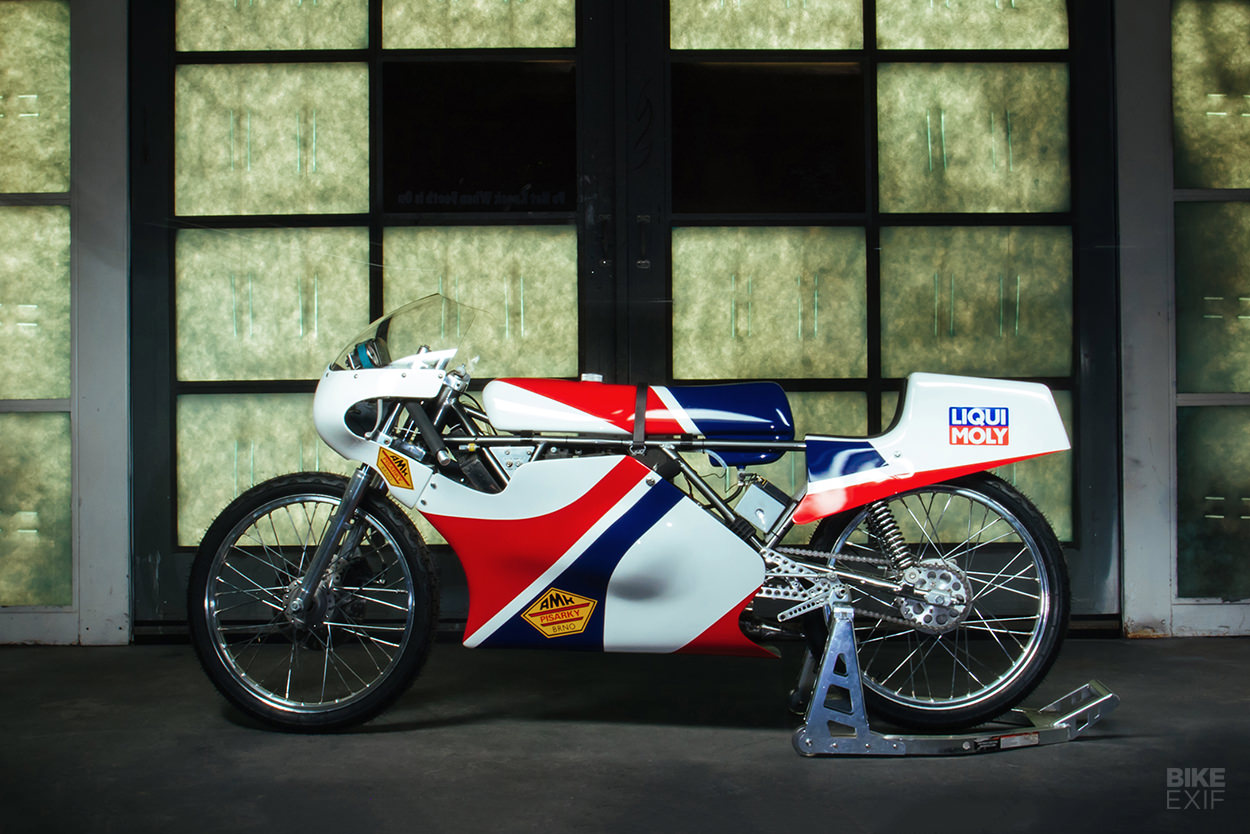
He rebuilt it to working order and put it up for sale on his website, which is how Mahlowitz stumbled upon it.
As a lifelong fan of two-strokes, and with a particular fascination with the European 50 cc GP racers of the 60s and 70s, Mahlowitz was a frequent visitor to the site. The Minarelli was just the donor he was looking for, so he snapped it up, and arranged shipping from Italy to Boston, USA.
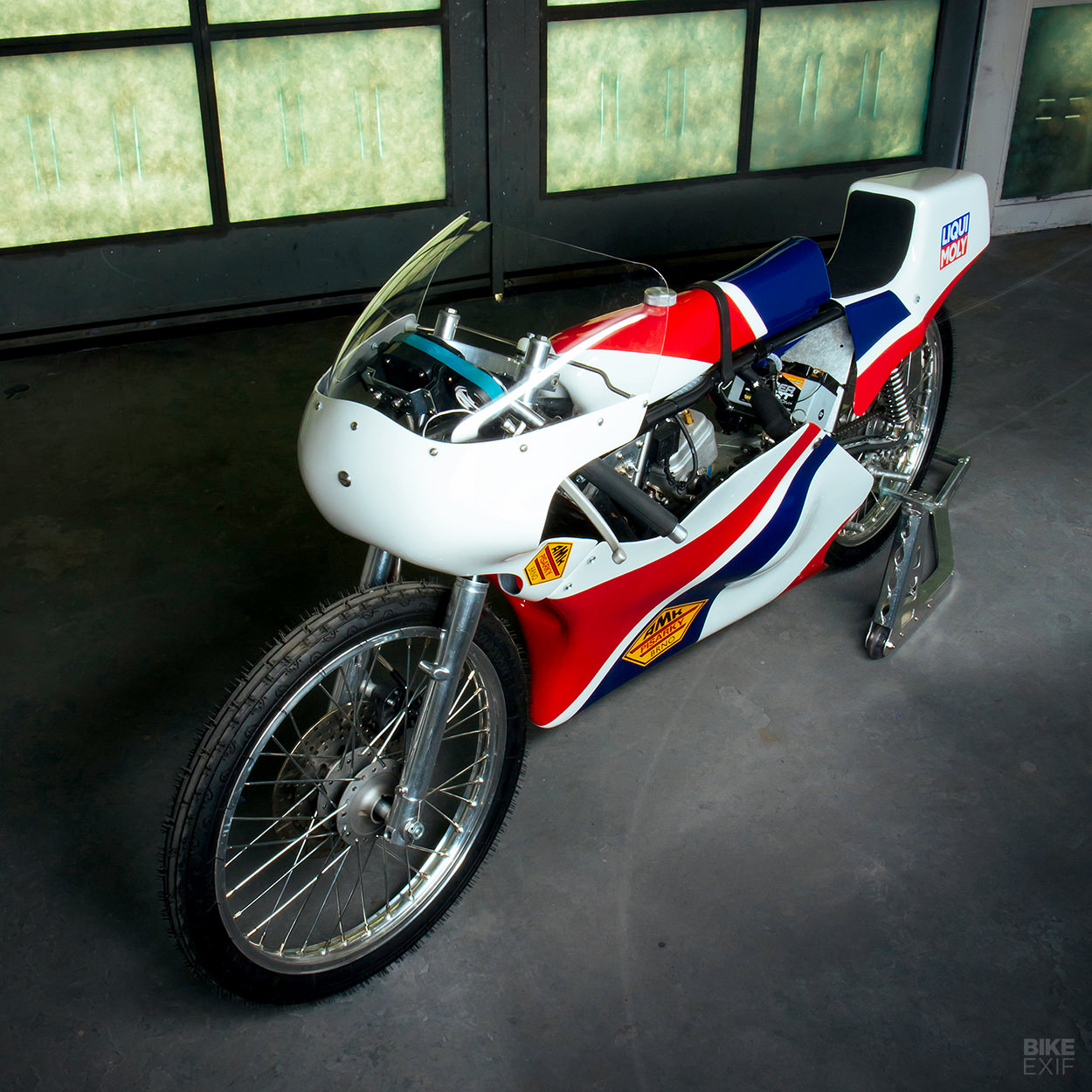
Just getting the bike Stateside took the better part of eight months, thanks to the red tape around importing a vehicle.
With the bike in his hands, Mahlowitz’s first task was figuring out exactly which direction to take the build in. Given the donor’s foggy past, he had no solid reference for a restoration job—so he scoured enthusiast websites like Danish-run Elsberg Tuning for inspiration. From there, he took notes on everything—from minutiae like period-correct levers to styling cues popular in 1970s Czechoslovakia.
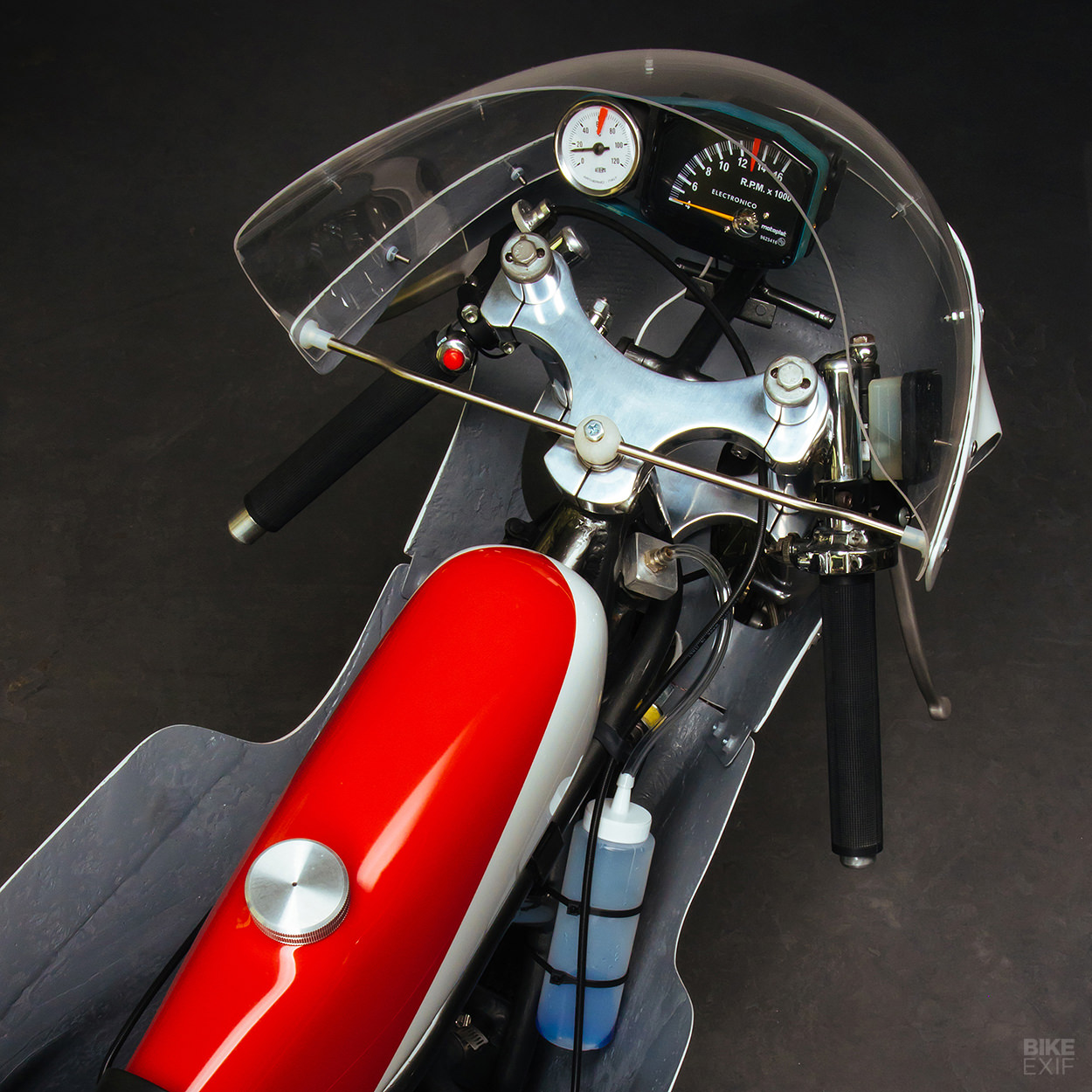
The Minarelli came as a ‘basic runner.’ So it already had some beat-up bodywork, Marzocchi forks and 18” Menani wheels, with a Grimeca disc brake at the front and a ČZ drum brake at the rear. But there were a lot of gaps to fill in—and since this is a very rare racer, replacement parts aren’t exactly on Alibaba.
Luckily, Mahlowitz is an R&D engineer at a firm that specializes in the 3D printing of metal components, giving him the unique opportunity to quickly prototype different functional and aesthetic parts. He could geek out and get really technical on things.
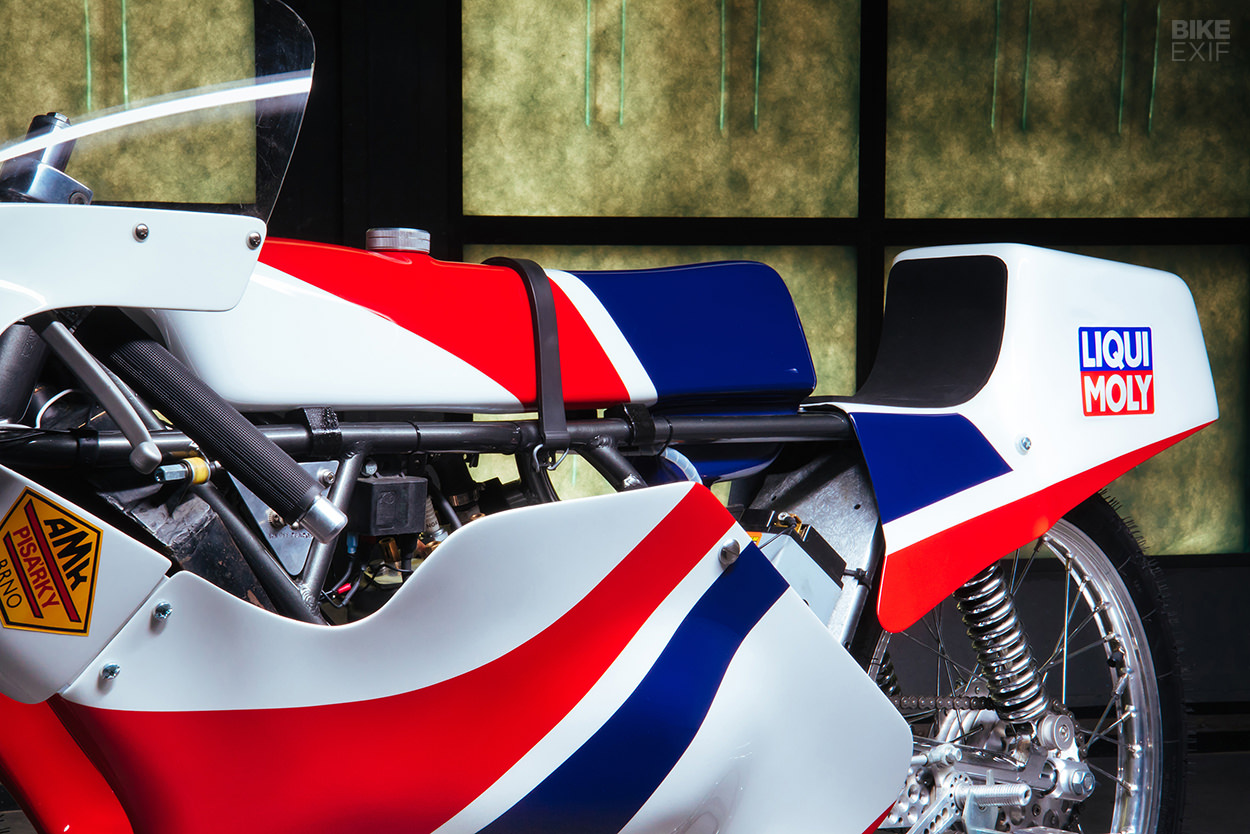
One of those things was the drive nut that connects the crankshaft to the rotary valve; it’s a special long hexagonal nut, with a keyway that opens and closes the inlet port. By 3D printing and sintering several nuts with slight keyway variations, Mahlowitz could more accurately tune the engine. This same method was applied to a number of smaller parts—juxtaposed against parts that he opted to fabricate by hand, in a bid to develop his metalworking skills.
One of the most difficult challenges was modifying the rotary valve housing to accommodate a 28 mm Dell’Orto carb. (The bike had come with a 22 mm carb, but research had shown that a 28 mm setup was more typical of the 1970s GP bikes.) Mahlowitz had to redesign the entire intake assembly, while maintaining very tight tolerances—something that took countless hours of CAD work to pull off.
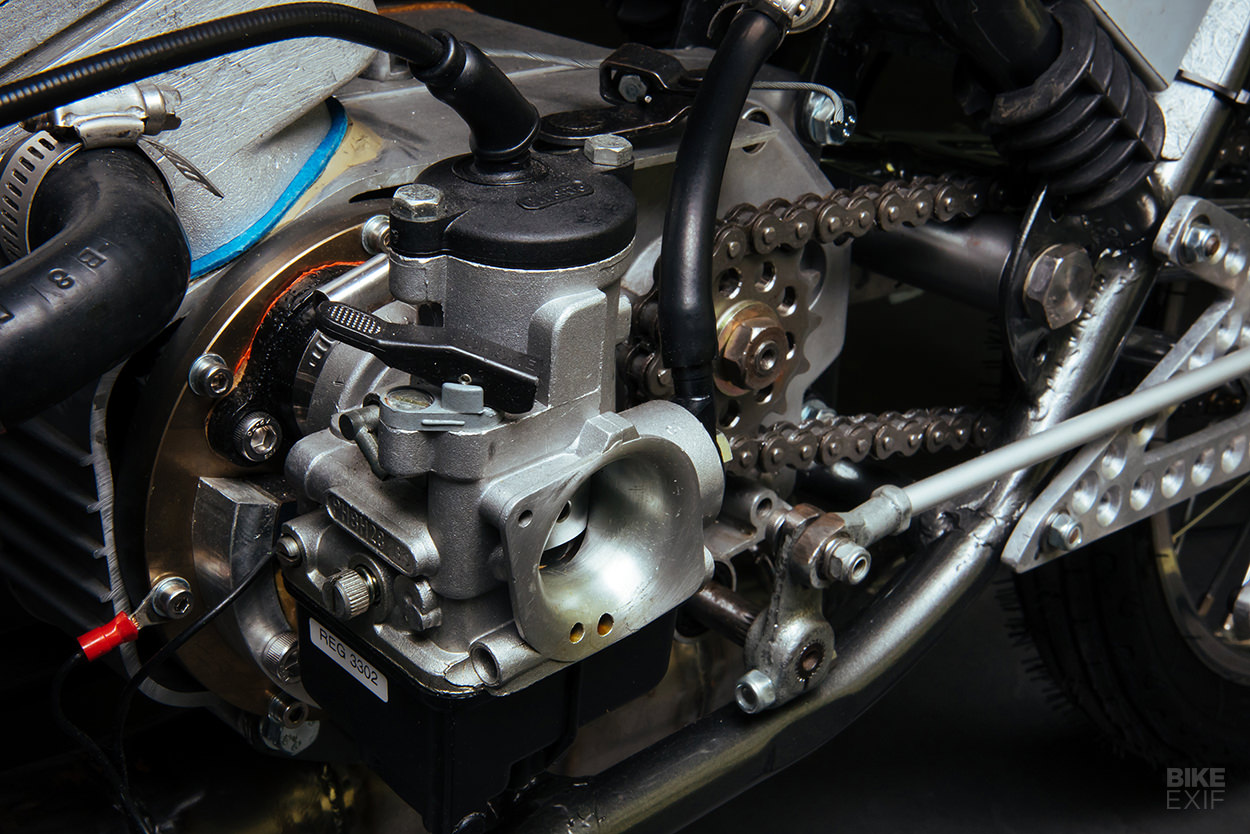
He also upgraded the original points ignition to a CDI from a KTM 50, and installed a short stroke crankshaft. The motor’s still hooked up to the original six-speed, close ratio transmission it was originally built with.
Not content with the non-period exhaust pipe that was already on the bike, Mahlowitz decided to build a custom unit with a properly tuned chamber and header. Designing, cutting, rolling, and welding together small conical cross sections of steel, and getting them to fit neatly inside the fairing and underneath the frame, was incredibly tedious. And because this was his first legitimate welding job, he went through three exhausts before he created something he was happy with.
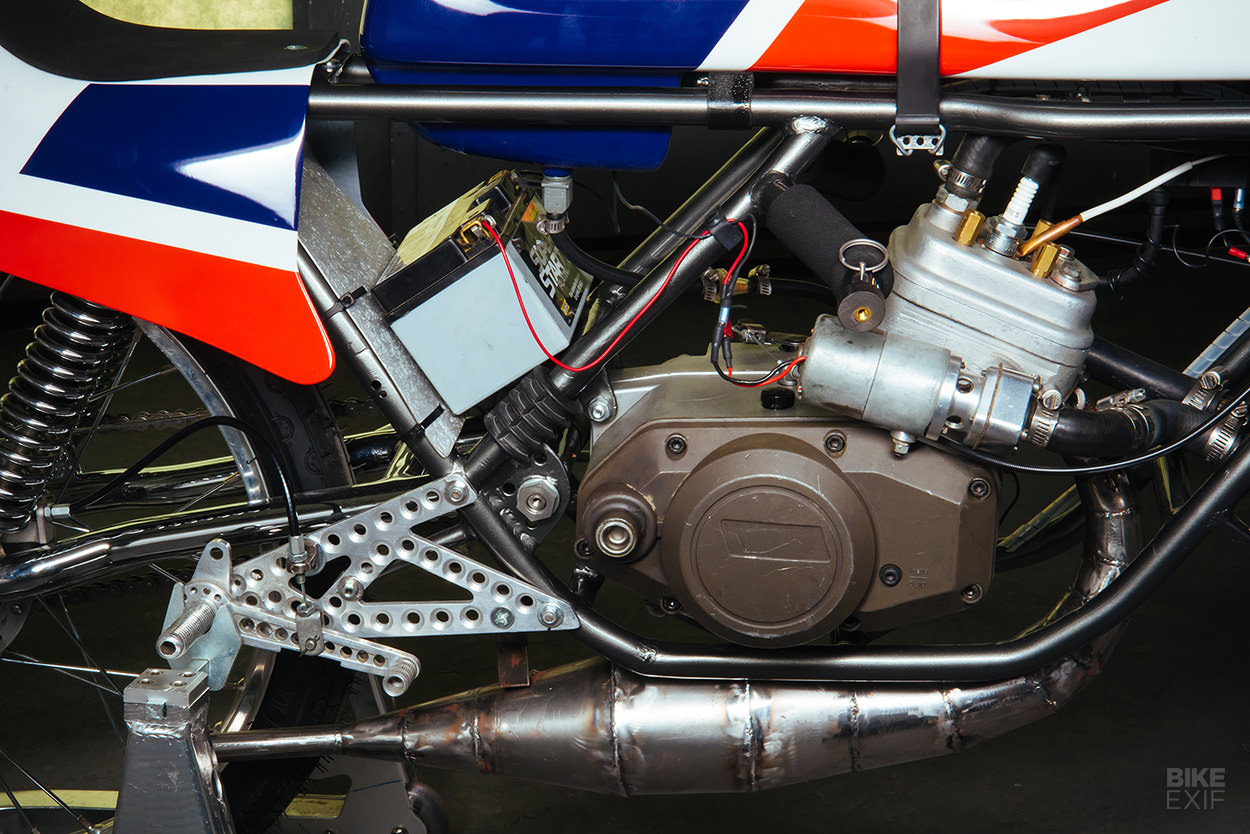
For the bodywork, Mahlowitz roped in Eric Silverio at Krazy Kustoms. Silverio had his work cut out for him—he had to patch and repair the fiberglass, and then reinforce it to make it more robust. He then resprayed the frame and fairing, using the exact paint scheme that the bike had arrived in. Why? Because when Gasparini sold the bike, he made Mahlowitz promise not to change the livery.
Finishing touches include a few period-correct decals—like replicas of the original AMK Pisarky Brno stickers on the fairing. The Minarelli’s also sporting neat details like a Motoplat tacho that runs from 4,000 to 16,000 rpm.
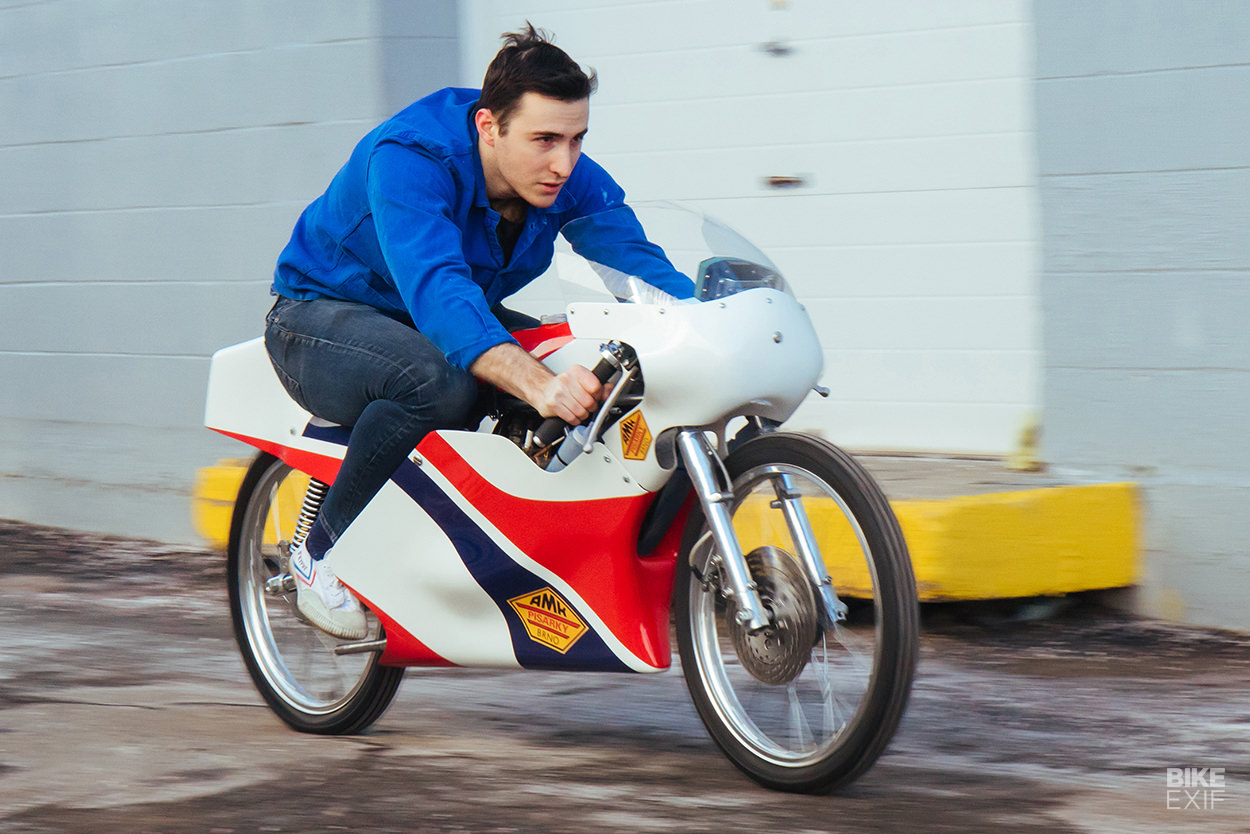
A year after he started the project, Mahlowitz finally fired it up… and quickly realized that an extremely narrow power band made this temperamental race machine a handful. But he was happy anyway, because he’d ticked a major item off his list: ownership of a vintage Grand Prix motorcycle that represents the ultimate in small-capacity two-stroke performance.
Reproduced with permission from Iron & Air magazine. Subscribe here. | Images by Joshua Elzey.
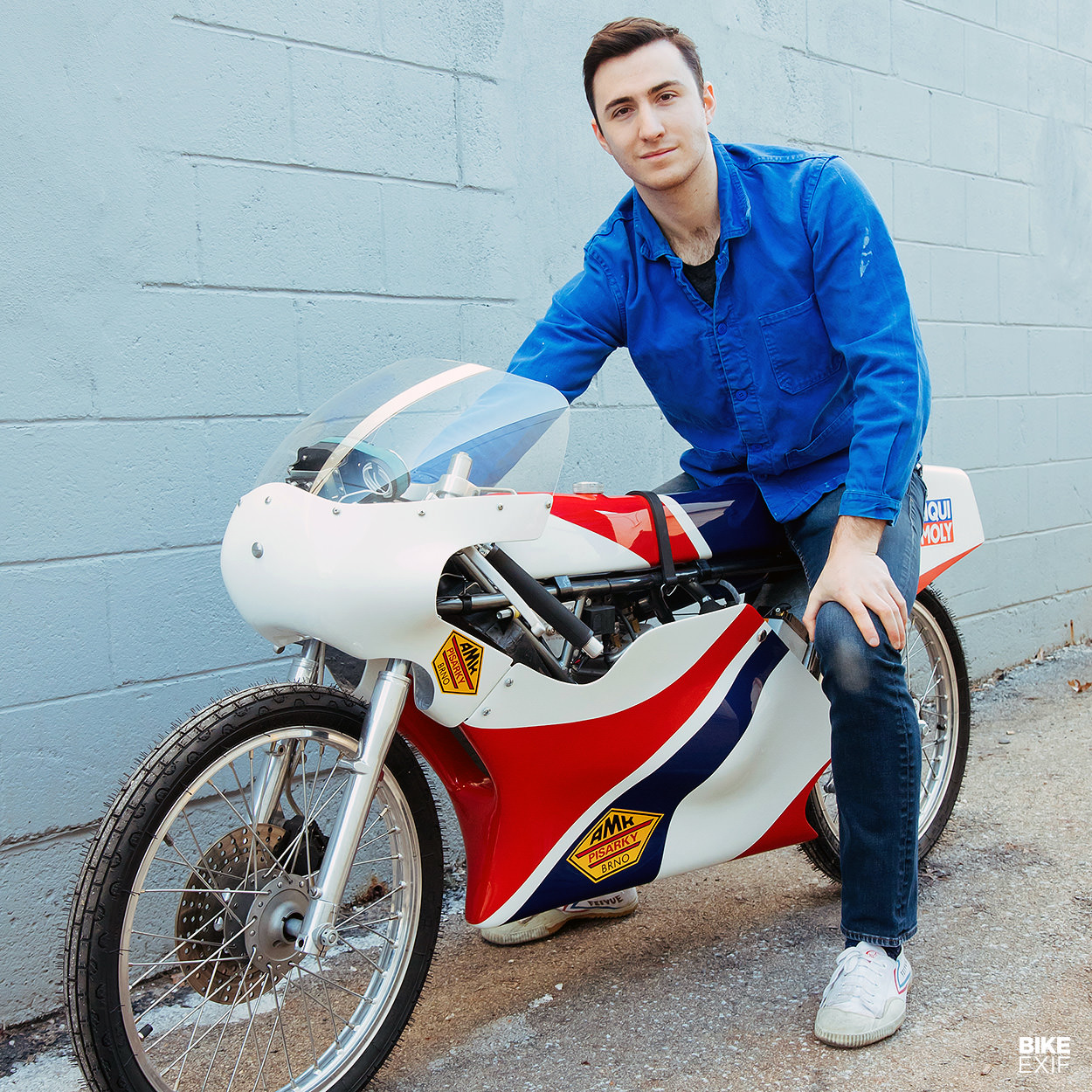
from Bike EXIF https://ift.tt/3cGfUsP
No comments:
Post a Comment